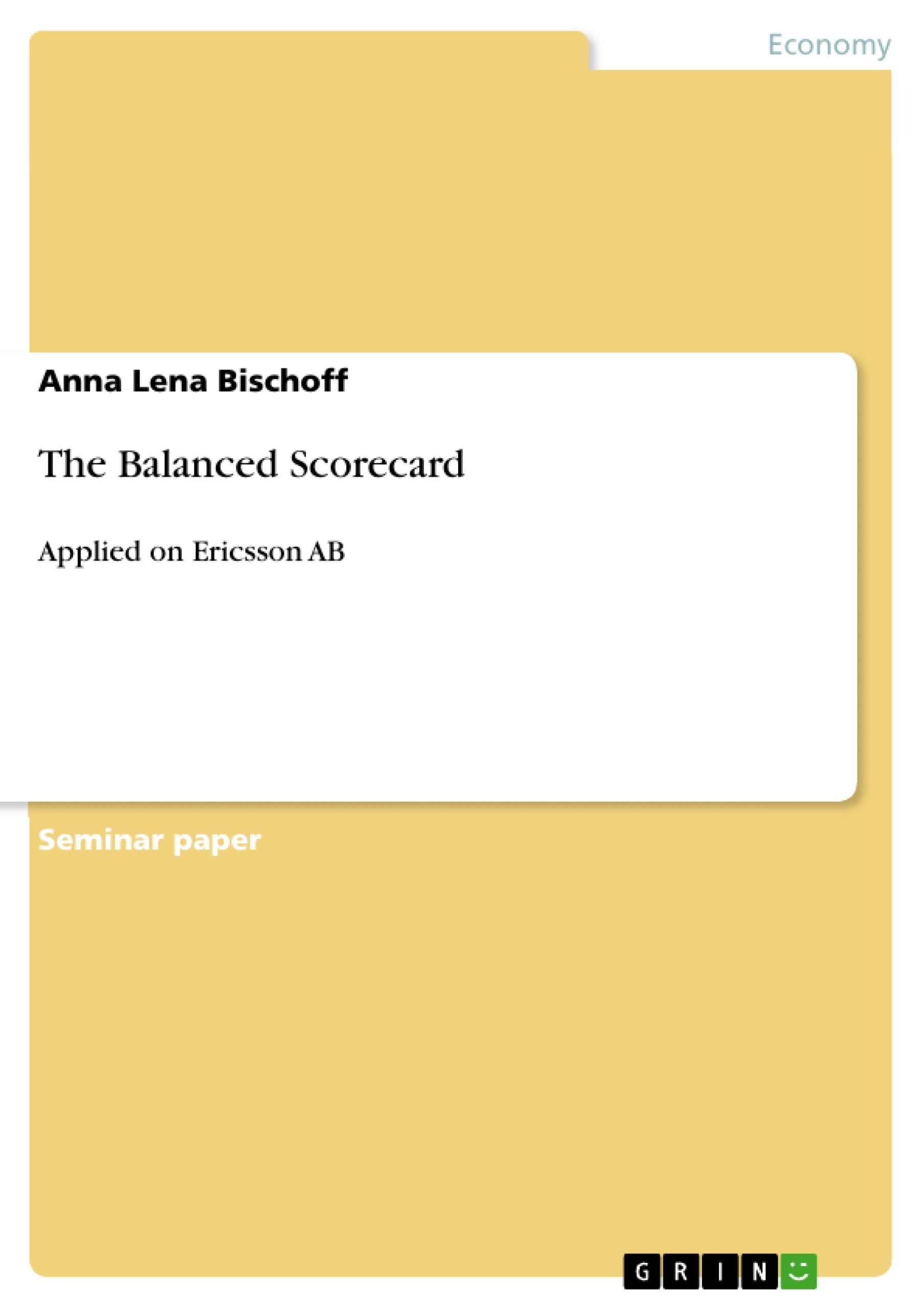Ericsson, operating in four major segments, providing communication networks, services, multimedia solutions and mobile phones, has become a multinational cooperation. Despite its traditional roots, emphasize lays on quality, innovation and sustainability. Due to its large size it has become vital to find a management system everyone is able to participate in on the one hand and which properly and timely monitors success and failure on the other hand.
This Case explains the Balanced Scorecard, a performance measurement system, which includes four different perspectives, the Financial Perspective, the Customer Perspective, the Internal Perspective and the Innovation and Human Perspective. These perspectives are implemented into the strategy of a company.
Table of Contents
1. Introduction
1.1. The Balanced Scorecard
1.1.1. The Financial Perspective
1.1.2. The Customer Perspective
1.1.3. The Internal Perspective
1.1.4. The Innovation and Human Perspective
1.2. Background Ericsson
2. Application of the Balanced Scorecard
2.1. Ericsson and the implementation of a scorecard
2.2. Financial Perspective at Ericsson
2.2.1. Strategic themes for the Financial Perspective at Ericsson
2.3. Customer Perspective at Ericsson
2.3.1. Strategic themes for the Customer Perspective
2.4. Internal Perspective at Ericsson
2.4.1. Strategic themes for the in Internal Perspective
2.5. Innovation and Human Perspective at Ericsson
2.5.1. Strategic themes for the Innovation and Human Perspective at Ericsson
3. Conclusion
4. References
4.1. Books
4.2. Articles
4.3. Reports
4.4. Internet sources
5. List of figures
6. Appendix
6.1. Explanation of terms used
- Citar trabajo
- Anna Lena Bischoff (Autor), 2011, The Balanced Scorecard, Múnich, GRIN Verlag, https://www.grin.com/document/168541



